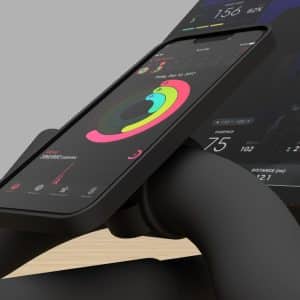The founders of DVR pioneer TiVo are shifting their focus from broadcast TV to broadband Internet as they introduce a new device designed to make it easier for people to find and manage video.
The sequel gets underway Tuesday with the release of the Qplay, a box that sorts and streams video clips compiled from all over the Internet. It’s on sale for $49 exclusively at www.qplay.co.
The Qplay is controlled through an application that can be installed on an iPad or iPhone to select video separated into categories, or “Qs.” All the video is stored in remote data centers so the line-up remains in sync even when a user switches from watching on a TV screen to viewing on an iPad or another device.
The Qplay’s debut comes more than 15 years after former TiVo Inc. CEO Mike Ramsay and fellow company founder James Barton unveiled the first digital video recorder at a consumer electronics show.
TiVo proved to be more versatile and convenient than video cassette recorders, encouraging millions of viewers to store TV shows so they could be watch the programs at their discretion instead of having the times dictated to them. TiVo’s DVRs also made it even quicker to skip through commercials.
One of TiVo’s first rivals in the DVR industry, ReplayTV, was founded by Anthony Wood, who now runs a Silicon Valley company that makes the Roku box _ a popular choice for streaming Internet video on television. The Qplay also will be competing against Apple TV, another streaming box, and Google Inc.’s Chromecast, a dongle-like device that sells for just $35.
After spending the past 18 months working on the Qplay, Ramsay and Barton are convinced they have figured out how to bring order to the jumble of video on the Internet.
“If you look at the state of Internet video today, it’s a mess,” Ramsay said. “It used to be you had 500 channels on TV and nothing to watch. Now it seems like you have 500 apps on your tablet and you go from one app to the next as you search for something to watch.”
The Qplay aims to become a vital video hub by offering its users a constantly changing mix of clips from dozens of websites. The device, which is about the size of an energy bar, does this by working with an app that asks users for access to their accounts on Twitter, Facebook and YouTube. Qplay then compiles all the video featured in links posted within their user feeds on Facebook and Twitter, as well as designated channels on YouTube.
Those clips are then sorted into “Qs,” such as news or extreme sports. Qplay users can also create their own specialty channels, such as curling if they’ve become enamored with the sport in the aftermath of the Winter Olympics in Russia.
The Qplay plugs into a TV’s HDMI port and relies on WiFi so an iPad can serve as a remote control to pick videos to show on a big screen. The videos will continue showing on a TV even when the iPad is in sleep mode to conserve the battery power. Users can also choose to watch the video on their tablets or phones. For now, Qplay is only compatible with Apple Inc.’s iOS software, but an application for Google’s Android software is also in the works. The Qplay is also planning to add Netflix and other Internet video subscription services to the mix later this year.
Ramsay stepped down as TiVo’s CEO in 2005 as the company struggled to grow after cable and satellite TV providers began making their own DVRs. TiVo sued many of the copycats for patent infringement and ended up winning lucrative licensing agreements after Ramsay’s departure.
Barton left his long-time job as TiVo’s chief technology officer in 2012, and reunited with Ramsay shortly after that departure. The two men launched InVisioneer, a San Jose, California, startup that is changing its name to Qplay. The company has raised an undisclosed amount of money from two of Silicon Valley’s top venture capital firms, Kleiner Perkins Caufield & Byers and Redpoint Ventures.
“We believe all video in the future ultimately will be delivered over the Internet, and we believe we have come up with something that is even easier to use than TiVo,” Ramsay said.
Associated Press








